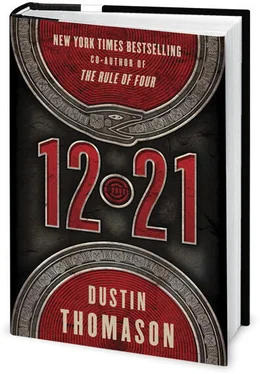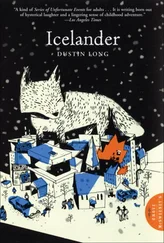Early in his career, Stanton had become one of the world’s experts on mad cow, and when the CDC founded the National Prion Center, he was the natural choice to head it. Back then it had seemed like the opportunity of a lifetime, and he was thrilled to make the move to California; never before had there been a dedicated research center for the study of prions and prion diseases in the United States. With Stanton’s leadership, the center was created to diagnose, study, and eventually fight the most mysterious infectious agents on earth.
Only it never happened. By the end of the decade, the beef industry had launched a successful campaign to show that just one person living in the United States had ever been diagnosed with mad cow. Grants for Stanton’s lab became smaller, and, with fewer cases in England as well, the public quickly lost interest. The worst part was they still couldn’t cure a single prion disease; years of testing various drugs and other therapies had produced one false hope after the next. Yet Stanton had always been as stubborn as he was optimistic and had never given up on the possibility that answers were just one experiment away.
Moving on to the next animal cage, he found another snake and another tiny mouse merely bored by its predator. Through this experiment, Stanton and his team were exploring a role for prions in controlling “innate instincts,” including fear. Mice didn’t have to be taught to be afraid of the rustling of the grass signaling a predator’s approach—terror was programmed into their genes. But after their prions were genetically “knocked out” in an earlier experiment, the mice began acting aggressively and irrationally. So Stanton and his staff started directly testing the effects of deleting prions on the animals’ most fundamental fears.
Stanton’s cellphone vibrated in the pocket of his white coat. “Hello?”
“Is this Dr. Stanton?” It was a female voice he didn’t recognize, but it had to be a doctor or a nurse; only a health professional wouldn’t apologize first for calling before eight in the morning.
“What can I do for you?”
“My name’s Michaela Thane,” she said. “Third-year resident at East L.A. Presbyterian Hospital. CDC gave me your number. We believe we have a case of prion disease here.”
Stanton smiled, pushed his glasses up the bridge of his nose, and said, “Okay,” as he moved on to the third animal cage. Inside, another mouse pawed its predator’s tail. The snake seemed almost befuddled by this reversal of nature.
“‘Okay?’” Thane asked. “That’s it?”
“Send over the samples to my office and my team will look at them,” he said. “A Dr. Davies will call you back with the results.”
“Which will be when? A week? Maybe I wasn’t being clear, Doctor. Sometimes I talk too fast for people. We think we have a case of prion disease here.”
“I understand that’s what you believe,” Stanton said. “What about the genetic tests? Have they come back?”
“No, but—”
“Listen, Dr…. Thane? We get thousands of calls a year,” Stanton interrupted, “and only a handful turn out to be prion disease. If the genetic tests are positive, call us back.”
“Doctor, the symptoms are highly consistent with a diagnosis of—”
“Let me guess. Your patient is having trouble walking.”
“No.”
“Memory loss?”
“We don’t know.”
Stanton tapped on the glass of one of the cages, curious to see if either of the animals would react. Neither acknowledged him. “Then what’s your presumptive symptom, Doctor?” he asked Thane.
“Dementia and hallucinations, erratic behavior, tremor, and sweating. And a terrible case of insomnia.”
“Insomnia?”
“We thought it was alcohol withdrawal when he was admitted,” Thane said. “But there was no folate deficiency to indicate alcoholism, so I ran more tests, and I believe it could be fatal familial insomnia.”
Now she had Stanton’s attention.
“When was he admitted?”
“Three days ago.”
FFI was a strange and rapidly progressing condition that arose because of a mutated gene. Passed down from parent to child, it was one of the few prion diseases that was strictly genetic. Stanton had seen half a dozen cases in his career. Most FFI patients first came in for medical attention because they were sweating constantly and having trouble falling asleep at night. Within months, their insomnia was total. Patients became impotent, experienced panic attacks, had difficulty walking. Caught between a hallucinatory waking state and panic-inducing alertness, nearly all FFI patients died after a few weeks of total sleeplessness, and there was nothing Stanton or any other doctor could do to help them.
“Don’t get ahead of yourself,” he told Thane. “Worldwide incidence of FFI is one in thirty-three million.”
“What else could cause complete insomnia?” Thane asked.
“A misdiagnosed methamphetamine addiction.”
“This is East L.A. I get the pleasure of smelling meth-breath every day. This guy’s tox screen was negative.”
“FFI affects fewer than forty families in the world,” Stanton said, moving down the line of cages. “And if there was a family history, you would’ve told me already.”
“Actually, we haven’t been able to talk to him, because we can’t understand him. He looks Latino or possibly indigenous. Central or South American maybe. We’re working on it with the translator service. ’Course, most days here, that’s one guy with a GED and a stack of remaindered dictionaries.”
Stanton peered through the glass of the next cage. This snake was still, and there was a tiny gray tail hanging out of its mouth. In the next twenty-four hours, when the other snakes got hungry, it would happen in every cage in the room. Even after years in the lab, Stanton didn’t enjoy dwelling on his role in the death of these mice.
“Who brought the patient in?” he asked.
“Ambulance, according to the admission report, but I can’t find a record of what service it was.”
This was consistent with everything Stanton knew about Presbyterian Hospital, one of the most overcrowded and debt-ridden facilities in East L.A. “How old is the patient?” Stanton asked.
“Early thirties probably. I know that’s unusual, but I read your paper on age aberrations in prion diseases, and I thought maybe this could be one.”
Thane was doing her job right, but her diligence didn’t change the facts. “I’m sure when genetics comes back, it will clear all this up quickly,” he told her. “Feel free to call Dr. Davies later with any further questions.”
“ Wait, Doctor . Hold on. Don’t hang up.”
Stanton had to admire her insistence; he was a pain in the ass when he was a resident too. “Yes?”
“There was a study last year on amylase levels, how they’re markers for sleep debt.”
“I’m aware of the study. And?”
“With my patient it was three hundred units per milliliter, which suggests he hasn’t slept in more than a week.”
Stanton stood up from the cage. A week without sleep?
“Have there been seizures?”
“There’s some evidence on his brain scan,” Thane said.
“And what do the patient’s pupils look like?”
“Pinpricks.”
“What happens in reaction to light?”
“Unresponsive.”
A week of insomnia. Sweating. Seizures.
Pinprick pupils.
Of the few conditions that could cause that combination of symptoms, the others were even rarer than FFI. Stanton peeled off his gloves, his mice forgotten. “Don’t let anyone in the room until I get there.”
AS USUAL, CHEL MANU ARRIVED AT OUR LADY OF THE ANGELS—mother church for Los Angeles’s four million Catholics—just as services were ending. The journey from her office at the Getty Museum to the cathedral downtown took almost an hour during rush hour, but she relished making it every week. Most of the time she was cooped up at her research lab at the Getty or in lecture halls at UCLA, and this was her chance to leave the west side, get on the freeway, and drive. Even the traffic, bane of L.A., didn’t bother her. The trip to the church was a kind of meditative break, the one time she could turn off all the noise: her research, her budget, her colleagues, her faculty committees, her mother. She’d have a smoke (or two), turn up the alt-rock of KCRW, and zone out a little. She always pulled off the exit ramp wishing she could just keep driving.
Читать дальше












